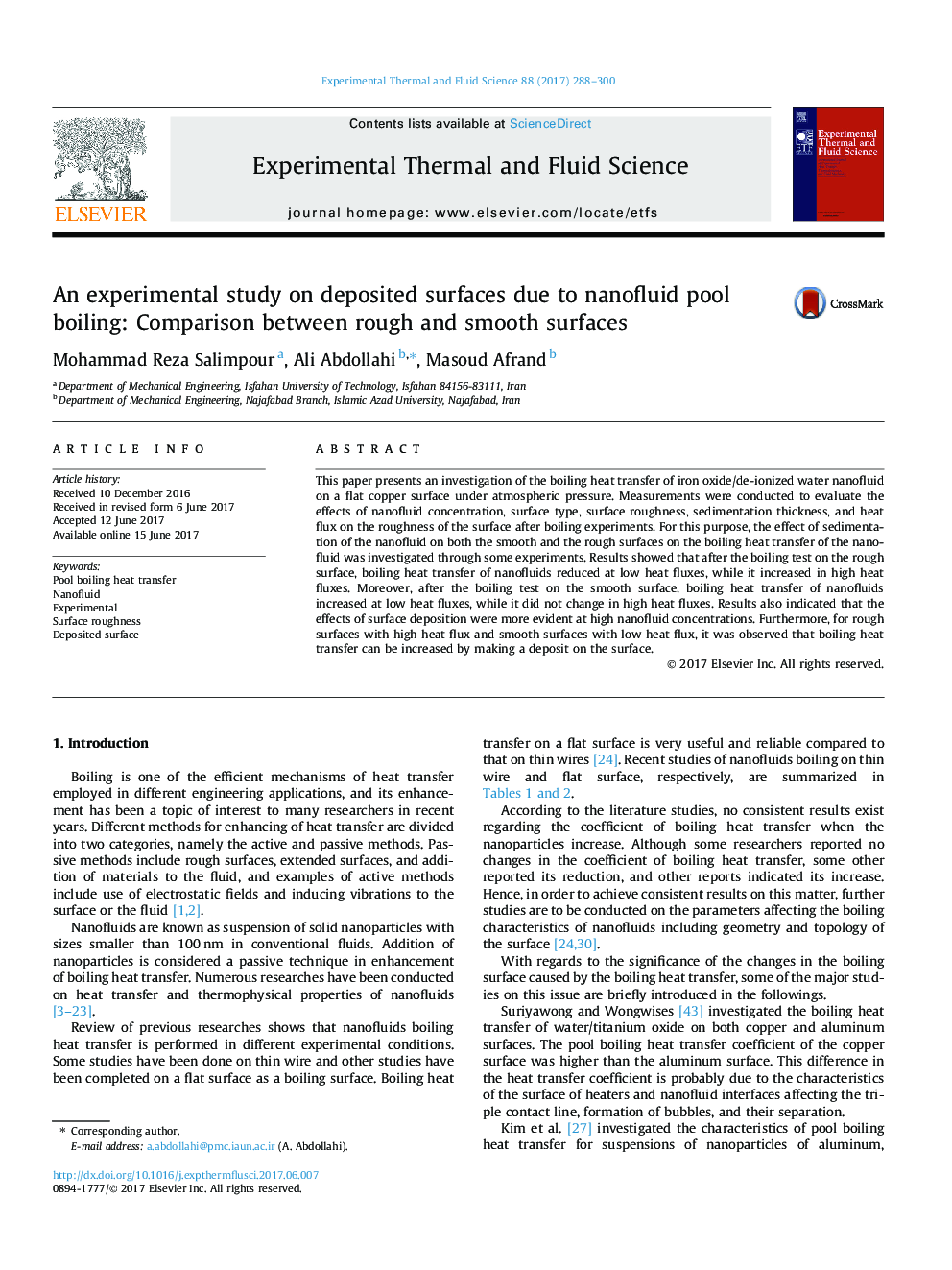| Article ID | Journal | Published Year | Pages | File Type |
|---|---|---|---|---|
| 4992585 | Experimental Thermal and Fluid Science | 2017 | 13 Pages |
Abstract
This paper presents an investigation of the boiling heat transfer of iron oxide/de-ionized water nanofluid on a flat copper surface under atmospheric pressure. Measurements were conducted to evaluate the effects of nanofluid concentration, surface type, surface roughness, sedimentation thickness, and heat flux on the roughness of the surface after boiling experiments. For this purpose, the effect of sedimentation of the nanofluid on both the smooth and the rough surfaces on the boiling heat transfer of the nanofluid was investigated through some experiments. Results showed that after the boiling test on the rough surface, boiling heat transfer of nanofluids reduced at low heat fluxes, while it increased in high heat fluxes. Moreover, after the boiling test on the smooth surface, boiling heat transfer of nanofluids increased at low heat fluxes, while it did not change in high heat fluxes. Results also indicated that the effects of surface deposition were more evident at high nanofluid concentrations. Furthermore, for rough surfaces with high heat flux and smooth surfaces with low heat flux, it was observed that boiling heat transfer can be increased by making a deposit on the surface.
Related Topics
Physical Sciences and Engineering
Chemical Engineering
Fluid Flow and Transfer Processes
Authors
Mohammad Reza Salimpour, Ali Abdollahi, Masoud Afrand,
